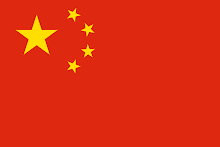 Shenzhou VII taikonauts (from left) Jing Haipeng,
Shenzhou VII taikonauts (from left) Jing Haipeng,Zhai Zhigang and Liu Boming wave to people at
a press conference in Jiuquan, Gansu Province, September 24, 2008. [Xinhua]
Shenzhou VII lifts off tonight
By Hu Yinan (China Daily)
2008-09-25
JIUQUAN, Gansu -- Shenzhou VII will lift off between 9:07
pm and 10:27 pm Thursday, carrying three astronauts, one of
who will become the first Chinese to walk in space, senior
space program officials said Wednesday.
One of the astronauts, Zhai Zhigang will walk in space
around 4:30 pm on Saturday, media reports said.
The spacecraft will carry astronauts Liu Boming and Jing
Haipeng, too.
One of the major tasks of the three-day mission is
extra-vehicular activity (EVA), or spacewalk in this case,
mission spokesman Wang Zhaoyao said at a news conference
Wednesday. The success of the task will mark a remarkable
step forward for China.
The other tasks include releasing a small monitoring
satellite and satellite data relay trials, said Wang, who
is also deputy director of China's manned space program
office.
"The Shenzhou VII mission marks a historic breakthrough in
China's manned space program. It is a great honor for all
three of us to be part of the mission, and we are fully
prepared for the challenge," Zhai Zhigang said when he and
the other two astronauts met the media Wednesday.
Tonight's mission will be the second stage of China's
three-stage manned space program, which eventually is aimed
at building a space lab and a space station by 2020.
Engineers began loading fuel in the carrier rocket at 4 pm
Wednesday, a process that would take seven hours and meant
the launch was "irreversible", Jiuquan Satellite Launch
Center officials said.
Shenzhou VII will be launched from atop the Long-March II-F
carrier rocket into orbit 343 km from Earth.
Two of the astronauts will enter the orbital module, put on
EVA spacesuits and prepare for the spacewalk. One of them
will put on a China-made "Feitian" EVA suit and the other,
a Russian Orlan-M "Haiying" suit.
And "one of the two will get out of the cabin and retrieve
the test samples loaded outside the module," Wang said.
Compared with the previous two manned space flights, the
Shenzhou VII mission faces unprecedented technical
difficulties, he said, even though China has achieved a
series of technical breakthroughs, including making an EVA
suit and airlock module.
During the mission, the astronauts will have to assemble
and test the 120-kg EVA suits, depressurize and
re-pressurize the cabin, and exit and re-enter the orbital
module.
"The process of EVAs cannot be simulated completely on the
ground and some of the newly developed products have to be
tested in flight for the first time," Wang said.
Thirteen Orlan-M spacesuits, three for actual EVAs, were
received from Russia under a contract signed in April 2004,
he said. Moscow developed the spacesuits, while Beijing
gave the power supply and communication systems.
"Russian experts have provided technical assistance
throughout the mission," he said.
Thanks to the collaboration, China took only three and half
years to design the EVA spacesuit. Or else it would have
taken eight years to do so, Chen Shanguang, head and chief
designer of the project's astronaut suits and other
accessories, said.
Russia helped train the astronauts and develop the Shenzhou
spacecraft, too.
But soon China could train foreign astronauts, Xinhua
quoted Chen as having said. "China's two successful manned
space missions have showed it has the technical ability to
independently train astronauts in future."
In 2003, China became the first country after the US and
Russia to send a man into space. It followed it with a
two-man mission in 2005.




No comments:
Post a Comment